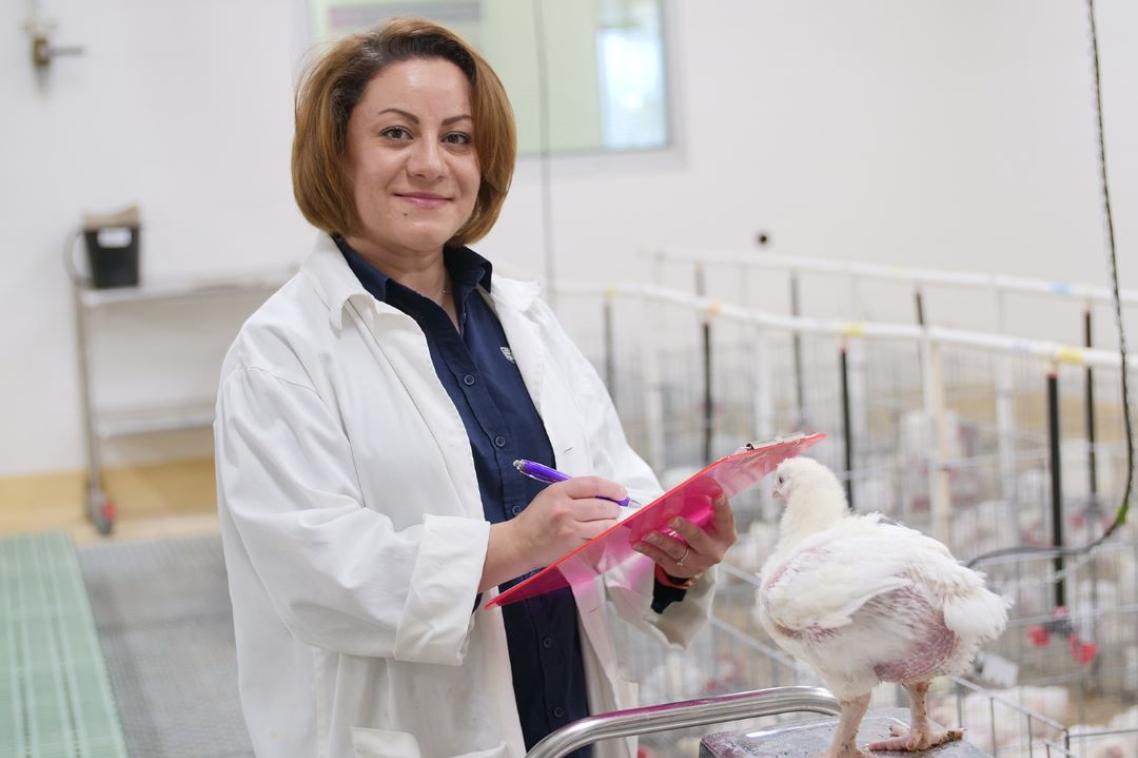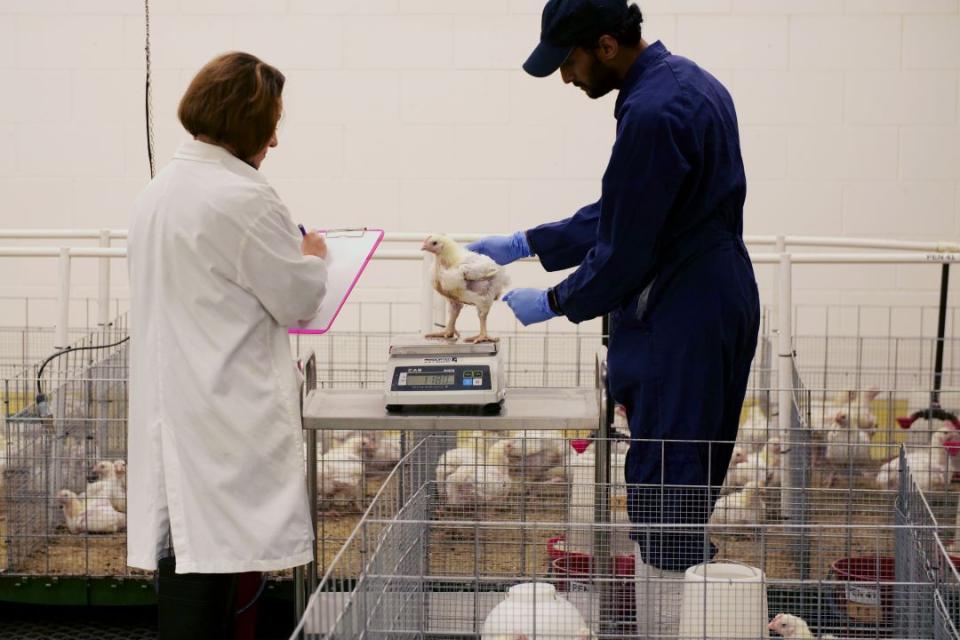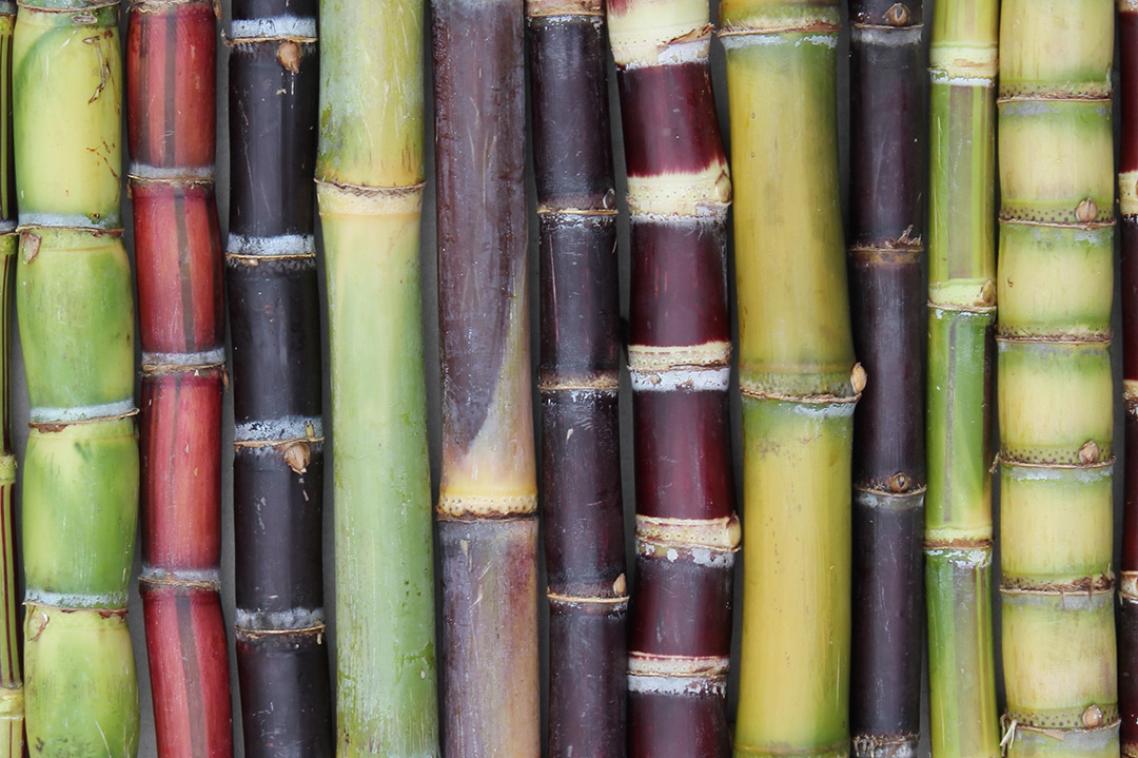Replacing imported feed to protect Australia’s love of chicken

Researchers measure the chickens' development to ensure the alternative feeds do not impact on their meat growing performance.
Key points
- Australia imports 1.2 million tonnes of soybean meal every year to feed commercial chickens
- The practice creates a great amount of greenhouse gases and relies greatly on international partners
- Researchers have found alternative Australian grown ingredients that meet the performance of soybean meal
University of Queensland researchers have developed animal feeds to secure Australia's chicken industry, support farmers and reduce the impact on the environment.
Dr Elham (Ellie) Assadi Soumeh from the School of Agriculture and Food Sustainability created feed formulas to replace soybean meal, the main protein ingredient in commercial chicken diets, which is imported at a rate of 1.2 million tonnes annually.
“It makes no sense to import soybean meal if there are Australian ingredients we could be using,” Dr Soumeh said.
“Importing is costly, not sustainable and comes with more risks.
“The global population is set to grow by 9 billion in the next 25 years so food production needs to increase by 70 per cent and we can’t rely on unsustainable practises.
“The average Australian eats more than 50 kilograms of chicken each year with 70 per cent of households consuming chicken twice a week.
“We need to ensure we are able to keep feeding the country’s hunger for chicken and make sure Aussie producers are the ones providing that meat.”
Soybean meal is a byproduct of soybean once the oil has been extracted.
“90 per cent of soybeans are produced in 5 countries: the United States of America, China, Brazil and India," Dr Soumeh said.
"So as the world’s population and chicken consumption grow, there’ll be a lot of pressure put on few producers to increase supply.
“The global pressure for more soybean has resulted in areas of Amazon rainforest being destroyed and turned into croplands to meet demand for soybean meal.
“Australia relies on imported soybean meal making the industry vulnerable to tariffs, pandemics and it creates an exorbitant amount of greenhouse gases.”
Dr Soumeh’s research found viable alternatives to soybean meal by adding crystalline amino acids to a mix of canola meal, lupin kernel meal, meat and bone meal, sunflower meal and black soldier fly larvae.
Black soldier fly larvae grown on food waste are an emerging alternative ingredient in animal feed with the potential to replace up to 30 per cent of soybean meal in a balanced diet for broiler chickens.
“Advanced technologies have made it possible to produce crystalline amino acids via fermentation and we add them to alternative ingredients to make a balanced feed,” Dr Soumeh.
“Using those alternate ingredients benefits the whole country.

Groups of chickens are fed different feed throughout the trial to measure their performance.
“Australia already grows more than enough canola to substitute soybean meal; we just need to process more here instead of exporting it.
“The alternate diets have no adverse effects on eggs or meat production, egg weight or quality, meat quality, or fatty acid content.
“This is a financially viable and green option and industry are interested.
“With growing pressures to become more environmentally friendly, the industry is calling for change.”
The trial received funding from amino acid producer Eurolysine.
Topics
Related articles

Finding efficiencies in creating jet fuel from plant waste

